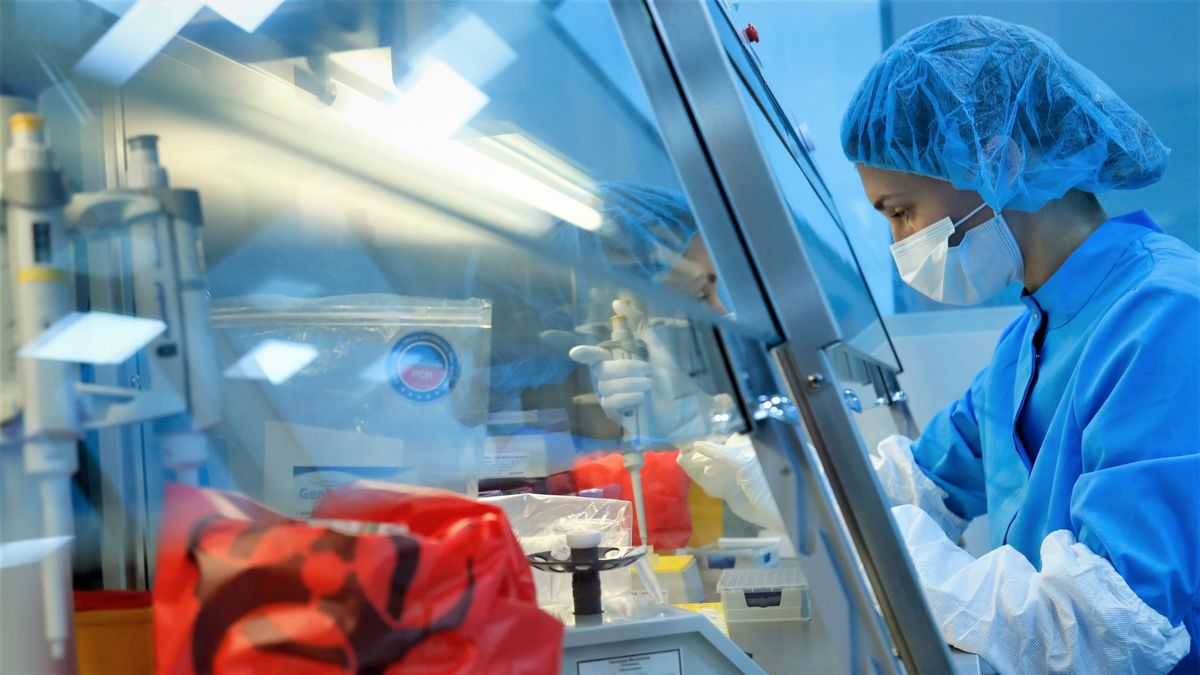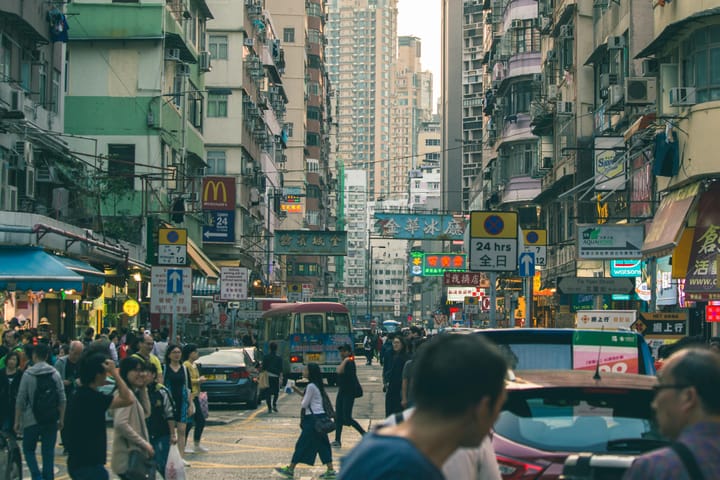Where the US, China and Russia are in the COVID-19 vaccine race, explained

A few minutes every morning is all you need.
Stay up to date on the world's Headlines and Human Stories. It's fun, it's factual, it's fluff-free.
As of September 9, no vaccines have been approved for full use in any country. In China and Russia, three vaccines have either received limited approval or have been rushed into use.
Since COVID-19 spread from China to countries around the world, researchers have been attempting to develop a vaccine against the virus. In addition to approximately 900,000 deaths worldwide, the economic and social disruptions the pandemic has caused have been enormous. Many believe a return to complete normalcy won’t be possible without a COVID-19 vaccine.
Currently, the United States, China and Russia are all racing to test and approve a vaccine. The countries are largely working independently (even stealing from each other), with their respective leaders promising a vaccine could be available soon. However, experts fear that countries are rushing to approve vaccines, forgoing the necessary steps to ensure they will be safe for broad usage.
The phases of vaccine testing
The New York Times is running a “Coronavirus Vaccine Tracker” in which it provides up-to-date information on all known COVID-19 vaccines being developed at the moment. So far, no vaccines have been approved for full use, which is to say, none have been conclusively determined to be safe for distribution to the general population.
The process for testing vaccines generally goes through three phases between preclinical testing (testing on cells and animals) and final approval. Phase 1, in which a small number of people are given the vaccine, is used to determine the proper dosage and that the vaccine influences the human immune system. In this phase, it is still being verified that the vaccine is safe for human use.
Phase 2 is when the vaccine goes into expanded trials, which are used to determine the safety of the vaccine for different groups (for instance, the elderly and children). Hundreds of people are given the vaccine in this phase.
Phase 3 expands the use of the vaccine to thousands of people. At this point, the vaccine is being compared to a placebo to see if it effectively protects recipients from getting the virus.
In June, the US Food and Drug Administration (FDA) stated of a possible vaccine, “The FDA would expect that a COVID-19 vaccine would prevent disease or decrease its severity in at least 50% of people who are vaccinated.” The FDA stated it would only approve a vaccine if “it meets the high standards that people have come to expect of the agency.”
As of September 9, no vaccines have been approved for full use in any country. However, in China and Russia, three vaccines have either received limited approval or have been rushed into use. Currently, there are nine vaccines in Phase 3.
How far along is the US in the development of a COVID-19 vaccine?
President Donald Trump and Dr. Anthony Fauci have made it clear they are hoping for a COVID-19 vaccine as soon as possible. Their timelines are markedly different, though.
Fauci, who is the director of the National Institute of Allergy and Infectious Diseases and one of the experts leading the US’s coronavirus response, has said he believes a vaccine could be available within the first three months of 2021. The hope would be to have 100 million doses, enough for roughly one-third of the nation’s total population.
Trump is seeking a vaccine even earlier, possibly before the 2020 election on November 3. As recently as September 7, Trump said it was likely there would be a safe vaccine by October.
Earlier this year, the Department of Health and Human Services launched Operation Warp Speed (OWS), which “aims to deliver 300 million doses of a safe, effective vaccine for COVID-19 by January 2021, as part of a broader strategy to accelerate the development, manufacturing, and distribution of COVID-19 vaccines, therapeutics, and diagnostics (collectively known as countermeasures).”
In May, as part of OWS, the Trump administration pushed for an acceleration of the vaccine development being overseen by AstraZeneca, a British-Swedish pharmaceutical company working alongside the US government’s Biomedical Advanced Research and Development Authority.
That October deadline may have faced a setback on September 8, though, when AstraZeneca was forced to halt its vaccine trial in Phase 3 after a participant was suspected to have had a serious adverse reaction. On Saturday, September 12, the researchers said they would resume the study after deeming the vaccine safe.
Federal officials have expressed doubt that Trump’s timeline for the vaccine is realistic. Both former Vice President Joe Biden and Senator Kamala Harris have said they are concerned any vaccine rushed into full use by the Trump administration would not be safe.
Besides AstraZeneca’s vaccine, there are two other US-supported vaccines in Phase 3. One is a collaboration between Massachusetts-based biotech company Moderna and the National Institutes of Health. The other is a multinational collaboration between the German biotech company BioNTech, the New York-based pharmaceutical company Pfizer and the Chinese pharmaceutical company Fosun Pharma.
On September 8, the chief executive offers of nine biotech and pharmaceutical companies – including AstraZeneca, BioNTech, Moderna and Pfizer – released a statement saying they were committed “to developing and testing potential vaccines for COVID-19 in accordance with high ethical standards and sound scientific principles.”
How far along is China in the development of a COVID-19 vaccine?
The first cases of COVID-19 were detected in Wuhan, China in December 2019. By January of this year, vaccines were already being developed both in the US and in China. At that point, Fauci said a vaccine was more than a year away.
In March, China was the first to initiate Phase 1 testing for a vaccine, giving it to just over a hundred people in Wuhan. There was speculation that China would authorize “emergency” use of a vaccine by as early as April.
In May, results of the Phase 1 testing were published in The Lancet. While 87% of the participants had adverse reactions with 28 days of receiving the vaccine, none were considered serious. The conclusion of the researchers was that the vaccine was “tolerable and immunogenic in healthy adults.” This allowed it to be the first vaccine to move on to Phase 2.
As China led the nation in its development of the vaccines, there was an ironic setback: China had largely quelled its outbreak, meaning there weren’t enough coronavirus-infected people to move into Phase 3 for its various potential vaccines.
Nonetheless, China currently has multiple vaccines in Phase 3. In addition to Fosun Pharma’s collaboration, there are vaccines being tested by CanSino Biologics, Sinovac Biotech and the state-owned Sinopharm, which is running trials on two separate vaccines. Sinovac was the first to move into a Phase 3 trial, testing the vaccine in Brazil.
At the beginning of September, China presented the two vaccines developed by Sinovac and Sinopharm at a trade show in Beijing. While neither has been made widely available, they are both expected to be on the open market soon, perhaps even by the end of the year.
In May, Chinese President Xi Jinping told the World Health Assembly he wants the China-developed vaccine to be for the “global public good,” leading to questions of whether he intends to allow open access to it.
“This will be China’s contribution to ensuring vaccine accessibility and affordability in developing countries,” Xi said at the time.
How far along is Russia in the development of a COVID-19 vaccine?
In early August, Russian President Vladimir Putin announced his country was approving a vaccine that its developer said would protect recipients from COVID-19 for at least two years. But the vaccine was rushed through testing and was only in the first two phases for two months. Putin claimed at the time that his daughter had received the vaccine.
That rush made many health experts worry that the vaccine was insufficiently tested and could pose a serious health risk to recipients. Vaccines go through protracted testing periods exactly because they are meant to be used across broad populations. Without thorough testing, it is unclear how effective the vaccine will be among different groups or what side effects it may have.
Perhaps in response to the negative press, a little over a week after Putin’s announcement, Russia walked back its authorization, saying the vaccine was under a “conditional registration certificate.” That included expanding its Phase 3 testing of the vaccine from 2,000 to 40,000 participants.
In early September, it was reported that the vaccine, known as Sputnik V, developed antibodies in all 76 people who participated in Phases 1 and 2. There were minor side effects, but the vaccine did neutralize the virus.
Without having been fully tested, Russia’s vaccine would not meet the FDA’s approval, meaning it wouldn’t be legally available in the US. US officials turned down offers from Russia to collaborate on the development of a vaccine, citing Russia’s rushed development as a main area of concern.
Venezuelan President Nicolas Maduro, a Putin ally, has said he wants to administer the Russian vaccine to all the candidates – nearly 15,000 – campaigning in this year’s legislative elections.
Have a tip or story? Get in touch with our reporters at tips@themilsource.com




Comments ()